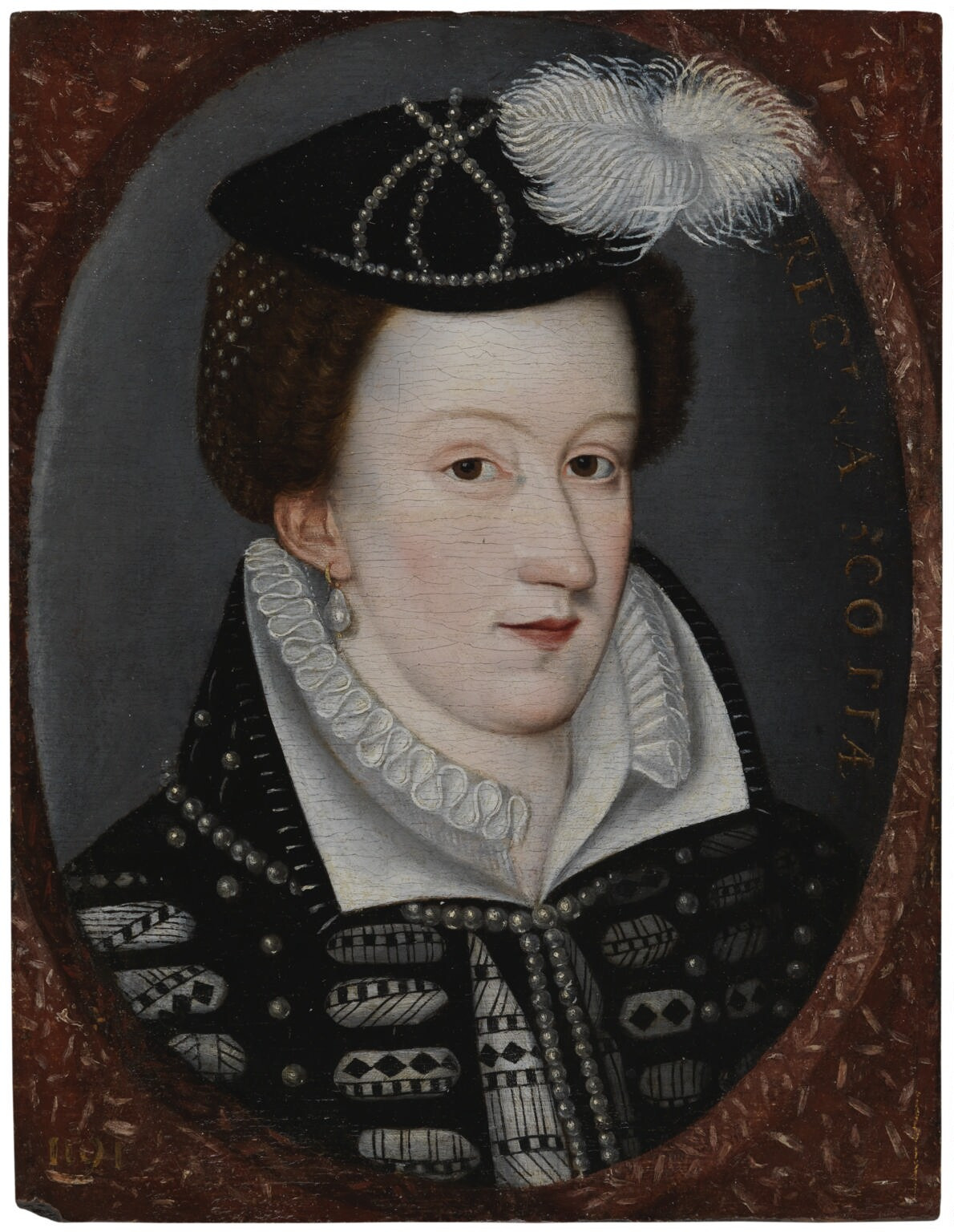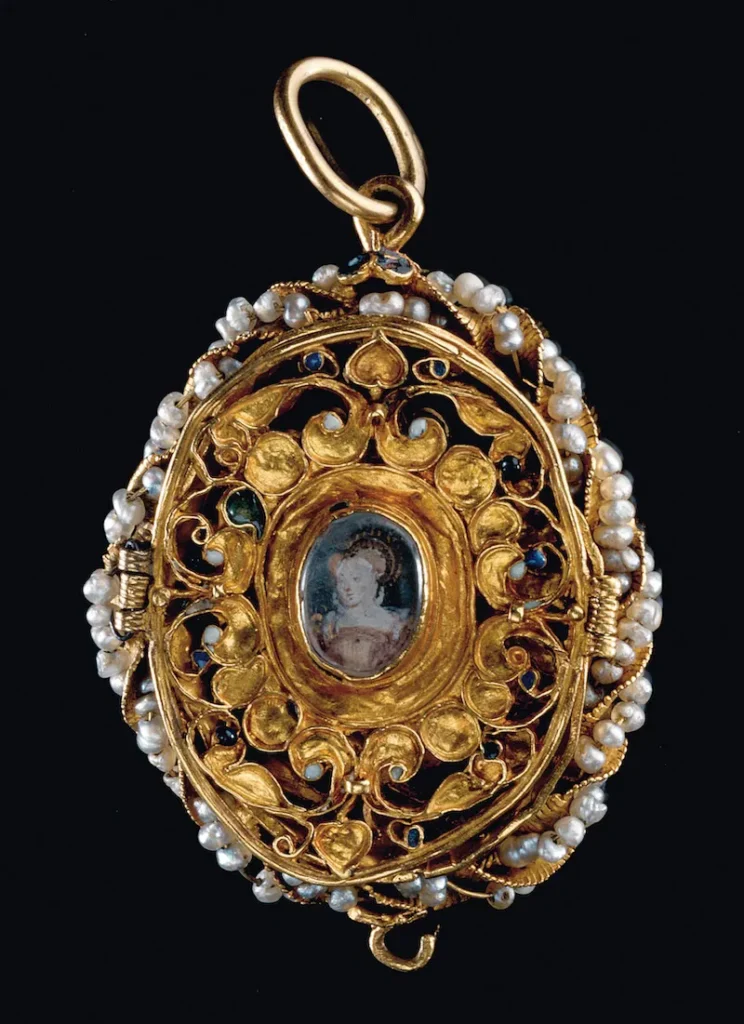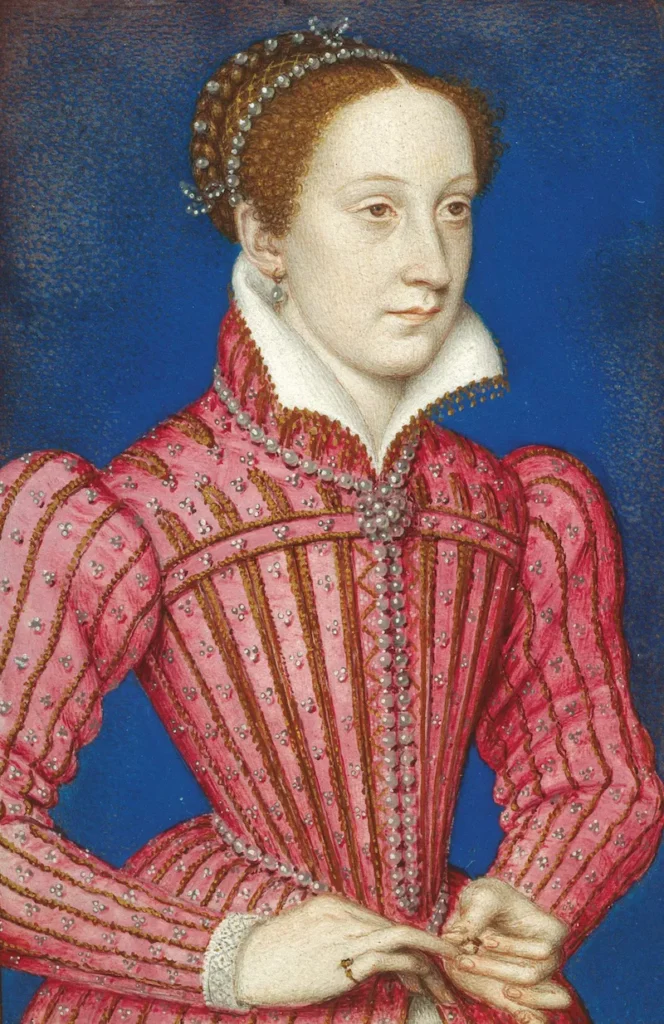Crown, Court, and Conflict: The Fight for Mary, Queen of Scots’ Jewels

Introduction: Jewels Fit for a Queen — and a Battle
Mary, Queen of Scots, lived a life marked by political intrigue, personal tragedy, and relentless power struggles. Among the many symbols of her contested authority were her magnificent jewels—ornaments not merely of beauty or vanity, but of sovereignty, lineage, and diplomacy. These treasures became the subject of fierce disputes, both during and after her lifetime, as queens, courtiers, and countries vied for control of their symbolic and material worth.
This article explores the extraordinary saga of Mary’s jewels, their origins, cultural and political significance, and the legal and dynastic battles that surrounded them from the Scottish court to Elizabethan England and beyond.
1. Jewels of a Queen: Wealth, Power, and Inheritance
Mary Stuart was born in 1542 and became queen of Scotland as an infant. Raised in the French court and briefly queen consort of France, she amassed a remarkable collection of jewels through inheritance, marriage, and diplomatic gifting. These jewels included:
- The Scottish Crown Jewels or “Honours of Scotland”
- Personal items passed down from Mary of Guise, her mother
- Extravagant gifts from her first husband, Francis II of France
- Wedding gifts from her second husband, Henry Stuart, Lord Darnley
Her collection contained gold and silver ornaments, precious stones, enamelled medallions, and jeweled rosaries—each piece holding political and dynastic meaning.
2. The Political Power of Jewels
In the 16th century, royal jewels were more than personal adornments—they were tangible symbols of legitimate rule and sovereign status. Monarchs used them in:
- State portraits to communicate wealth and divine right
- Diplomatic gifting to seal alliances
- Ceremonial events such as coronations and marriages
- Collateral for loans and political favors
Mary’s jewels became central to her public image as a queen—both in Scotland and, later, during her captivity in England.
3. The Fall of a Queen and the Fate of Her Finery
After her forced abdication in 1567 and flight to England in 1568, Mary’s jewels became contested property. She had taken some with her into exile, while others remained in Scottish hands or were seized by her enemies.
- Her half-brother, James Stewart, Earl of Moray, acting as regent for her son James VI, sold off portions of her jewelry to fund the Protestant government.
- Some were pawned or melted down to pay troops or secure alliances.
- Mary herself, imprisoned in England, attempted to recover her jewels through letters and intermediaries, asserting her right as a queen and heir of both Scottish and French dynasties.

4. Elizabeth I vs. Mary: A Battle of Queens and Jewels
Mary’s cousin and rival, Elizabeth I of England, also became entangled in the jewel controversy. Elizabeth, wary of Mary’s claim to the English throne, was keen to prevent her from regaining symbols of sovereignty.
- Some of Mary’s jewels were seized by English officials and repurposed or added to the English crown’s collection.
- Elizabeth rejected Mary’s petitions for their return, citing security risks and political tensions.
- Items suspected of containing hidden messages, especially those used in Catholic rituals, were confiscated or destroyed.
Despite the strained relationship, Elizabeth was fascinated by Mary’s legacy, and after Mary’s execution in 1587, some believe Elizabeth may have preserved or secretly kept parts of her collection.
5. The Aftermath: Heirs, Treasures, and Traces
After Mary’s death, the battle for her jewels continued in other forms:
- James VI of Scotland (later James I of England), her son, inherited her claim and attempted to reclaim her scattered collection once he ascended the English throne in 1603.
- Some pieces were reintegrated into the English royal collection and may have been worn by later monarchs such as Anne of Denmark or Henrietta Maria.
- Others appeared in private collections or were sold abroad, disappearing into the hands of European nobility.
Scholars and historians have spent centuries tracing the provenance of specific items, comparing portraits, inventories, and diplomatic records.
6. What Remains Today?
While many of Mary’s jewels were lost to history, melted down, or disassembled, a few are believed to have survived, including:
- A locket ring possibly containing her miniature portrait
- A gold rosary reputed to have belonged to her (though its authenticity remains debated)
- Detailed inventories and letters that document dozens of items now lost
In museums and archives across Britain and France, references to “the Queen of Scots’ jewels” continue to intrigue curators and researchers alike.

Conclusion: Legacy in Glittering Fragments
The jewels of Mary, Queen of Scots, were more than ornamental—they were instruments of power, tools of diplomacy, and symbols of dynastic legitimacy. Their journey from courtly splendor to contested artifacts reflects the turbulent era of religious reformation, royal rivalry, and female monarchy. Today, they remain a tantalizing thread in the tapestry of Mary’s tragic and fascinating life—a queen remembered not only for her fate, but for the glittering remnants of her lost glory.




